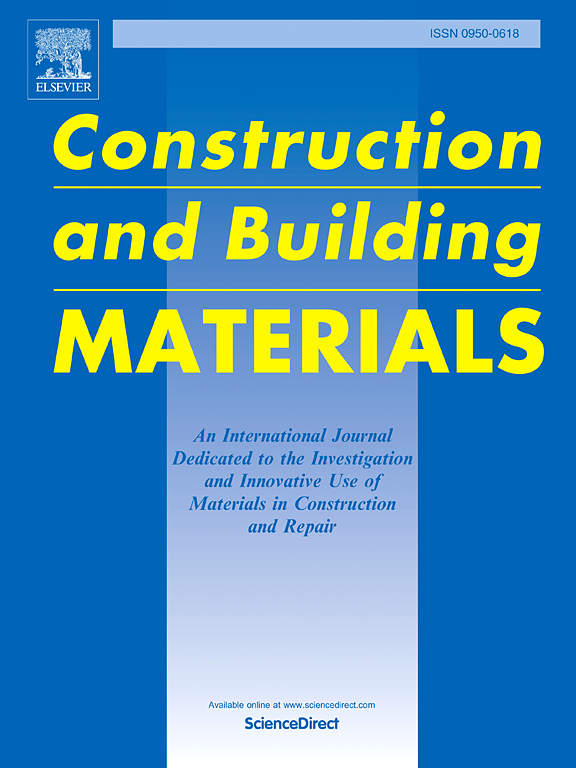IF 7.4
1区 工程技术
Q1 CONSTRUCTION & BUILDING TECHNOLOGY
引用次数: 0
摘要
为了解决铝酸钙水泥基灌浆材料(GM)的高脆性和开裂风险,该研究引入了丙烯酰胺(AM)原位聚合来增韧 GM(P-GM)。该研究对丙烯酰胺单体含量为 0 至 40 wt% 的样品的机械变形、强度、反应产物、微观结构和孔隙结构进行了综合评估。结果表明,AM 单体降低了 GM 的水化速度和程度,从而提高了 P-GM 试样中 AM 的聚合度。此外,AM 与水泥颗粒之间的粘结,加上聚丙烯酰胺(PAM)的絮凝和吸附作用,有效改善了不同相之间的弱界面粘结。P-GM 试样的变形能力明显提高,挠度增加了 9172.60%,拉伸应变增加了 1027.69%。然而,试样的变形能力在后期有所下降。基于这些发现,研究提出了 P-GM 增韧和随后韧性降低的机制,为有机/无机复合材料的水合机制提供了启示。本文章由计算机程序翻译,如有差异,请以英文原文为准。
Study on the toughening of calcium aluminate cement-based grouting materials by in-situ polymerization of acrylamide and the mechanism of toughness change
In order to address the high brittleness and cracking risk of calcium aluminate cement-based grouting materials (GM), the study introduced the in-situ polymerization of acrylamide (AM) to toughen GM (P-GM). A comprehensive evaluation was conducted on the mechanical deformation, strength, reaction products, microstructure, and pore structure of samples with AM monomer contents from 0 to 40 wt%. The results indicated that the AM monomer reduced the hydration rate and extent of GM, leading to an increased polymerization degree of AM in the P-GM specimens. Additionally, the bonding between AM and cement particles, coupled with the flocculation and adsorption effects of polyacrylamide (PAM), effectively improved the weak interfacial bonding between different phases. The P-GM specimens exhibited significantly increased deformation capacity, with deflection increasing by 9172.60 % and tensile strain by 1027.69 %. However, the deformation ability of the samples decreased at later stages. Based on these findings, the study proposed a mechanism for the toughening of P-GM and the subsequent reduction in toughness, providing insights into the hydration mechanisms of organic/inorganic composite.
求助全文
通过发布文献求助,成功后即可免费获取论文全文。
去求助
来源期刊

Construction and Building Materials
工程技术-材料科学:综合
CiteScore
13.80
自引率
21.60%
发文量
3632
审稿时长
82 days
期刊介绍:
Construction and Building Materials offers an international platform for sharing innovative and original research and development in the realm of construction and building materials, along with their practical applications in new projects and repair practices. The journal publishes a diverse array of pioneering research and application papers, detailing laboratory investigations and, to a limited extent, numerical analyses or reports on full-scale projects. Multi-part papers are discouraged.
Additionally, Construction and Building Materials features comprehensive case studies and insightful review articles that contribute to new insights in the field. Our focus is on papers related to construction materials, excluding those on structural engineering, geotechnics, and unbound highway layers. Covered materials and technologies encompass cement, concrete reinforcement, bricks and mortars, additives, corrosion technology, ceramics, timber, steel, polymers, glass fibers, recycled materials, bamboo, rammed earth, non-conventional building materials, bituminous materials, and applications in railway materials.
 求助内容:
求助内容: 应助结果提醒方式:
应助结果提醒方式:


